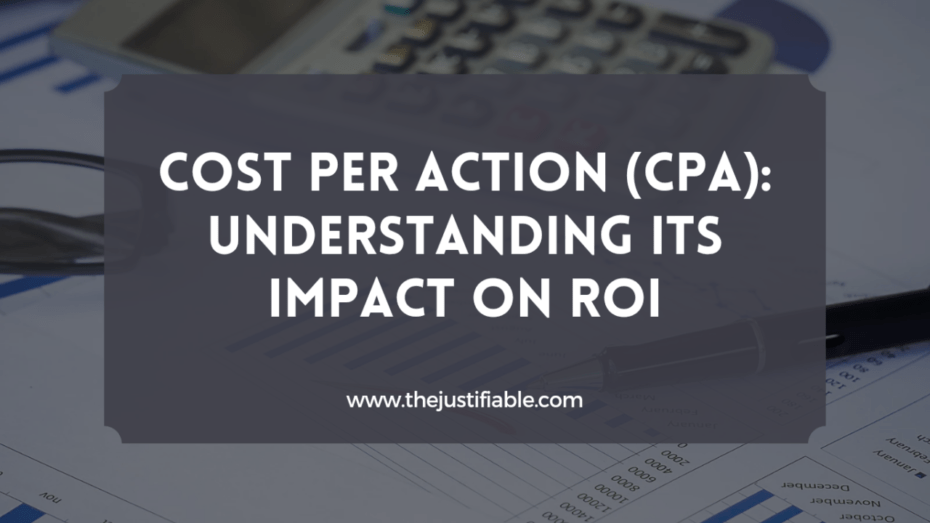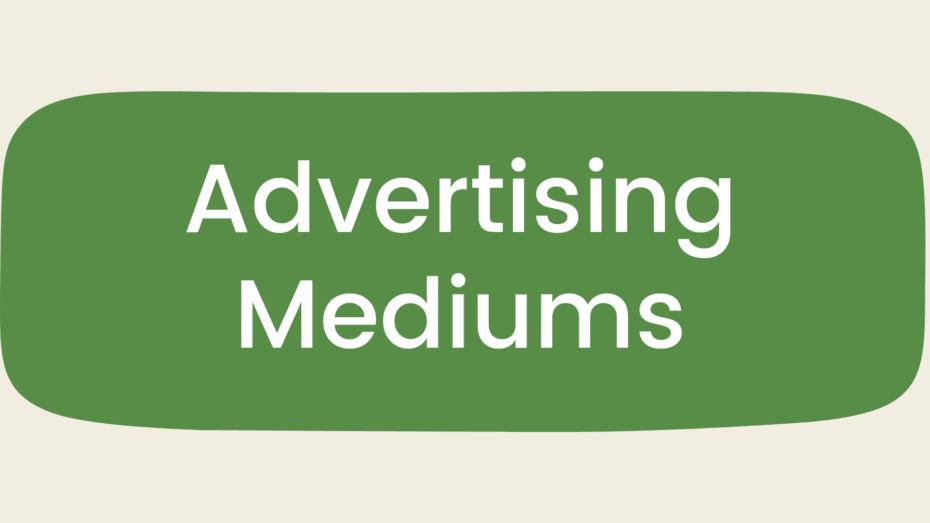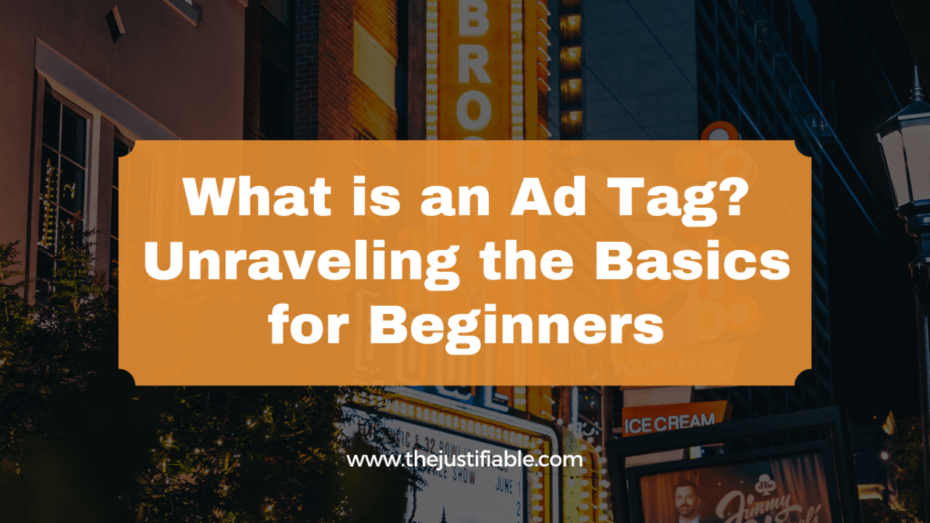Disclosure: This post contains affiliate links, which means that if you click on them and make a purchase, I will receive a commission. Read our Disclaimer for More.
In the dynamic world of digital marketing, understanding different advertising models such as Cost Per Action (CPA) can be the turning point in creating a successful marketing campaign.
Today, we delve deeper into CPA, uncovering what it is and how it works. By comprehending these basic principles, marketers can harness the power of CPA to significantly boost their Return on Investment (ROI).
Understanding the Basics
To fully comprehend how CPA affects ROI, it’s crucial first to understand what CPA is and how it functions within the marketing ecosystem. This foundational knowledge will serve as a launching pad for further exploration into the world of CPA.
What is Cost Per Action (CPA)?
Cost Per Action, often abbreviated as CPA, is a pricing model used in online advertising where advertisers pay for a specific action associated with their ad. Unlike other advertising models where costs are incurred per view or click, CPA is centered around the user’s action. These actions can vary and include a range of activities such as form submission, sign-up, purchase, or any other action that the advertiser deems valuable.
In essence, CPA provides a quantifiable metric that allows advertisers to gauge the financial implications of their marketing efforts. By focusing on user actions, which are inherently more valuable than mere views or clicks, advertisers can achieve a higher degree of effectiveness in their campaigns. The CPA model, therefore, provides a tangible way to measure marketing success.
How Does Cost Per Action Work?
Now that we’ve defined what CPA is, the question becomes: How does it work? The operation of the CPA model revolves around the following steps:
Placement of Ads: Advertisers place ads on platforms that target their desired audience, such as social media, search engines, or affiliate websites.
User Action: Users who encounter the ad may then perform a certain action, such as purchasing a product, registering for a service, or filling out a form.
Cost Incurring: The advertiser incurs cost only when the user completes the predetermined action.
Analysis and Adjustments: The success of the ad is evaluated based on the number of completed actions and the total cost associated with these actions. This evaluation aids in fine-tuning the campaign strategy and making adjustments to maximize ROI.
With the CPA model, the relationship between an advertiser and a publisher is results-oriented, which makes the model appealing to both parties. Advertisers enjoy a higher probability of conversion, while publishers benefit from potentially higher ad revenues if their audience is highly engaged and likely to perform the desired actions.
Differences Between CPA and Other Online Advertising Models
One of the keys to leveraging the potential of digital advertising is understanding the different pricing models available and their unique benefits.
In this section, we’ll be comparing Cost Per Action (CPA) with other popular online advertising models, namely Cost Per Click (CPC) and Cost Per Mille (CPM). By examining their differences, we can highlight CPA’s unique strengths and the advantages it offers to advertisers.
Cost Per Action (CPA) vs Cost Per Click (CPC)
When it comes to online advertising, both CPA and CPC are widely used models, but they serve different purposes and offer different benefits.
Cost Per Click, or CPC, is an advertising model where advertisers pay each time a user clicks on their ad. The main advantage of this model is that it guarantees a certain level of engagement, as users have to interact with the ad by clicking on it. However, a click doesn’t guarantee that the user will take any further action, such as making a purchase or filling out a form.
On the other hand, Cost Per Action (CPA) only charges advertisers when users take a specific, predefined action after clicking the ad. This can be anything from making a purchase to signing up for a newsletter.
This means that CPA often aligns more closely with advertisers’ ultimate goals, which typically extend beyond mere clicks and aim at generating leads or sales. In this sense, CPA can provide a more accurate picture of an ad campaign’s success.
It’s important to note that while CPA can be more cost-effective by focusing on valuable user actions, it often requires a more robust strategy and a deeper understanding of the target audience to motivate them to complete the desired action.
Cost Per Action (CPA) vs Cost Per Mille (CPM)
Cost Per Mille, or CPM (Mille is Latin for thousand), is another common online advertising model where advertisers pay for every thousand impressions (views) their ad receives. Unlike CPA, which focuses on the user’s action, CPM is purely about exposure. It’s an effective model for campaigns aiming to increase brand awareness or visibility.
While CPM can be useful for reaching a large audience, it doesn’t guarantee any engagement with the ad. Advertisers pay regardless of whether users click on the ad or take any further action.
In contrast, Cost Per Action (CPA) offers a performance-based model that directly links advertising costs to user actions. As such, it can offer a more efficient use of advertising budget for campaigns aimed at driving specific actions, like lead generation or sales, rather than broad exposure.
The Importance of Cost Per Action in Digital Marketing
In the landscape of digital marketing, Cost Per Action (CPA) is rapidly growing in popularity. This is largely due to its performance-based nature, which allows advertisers to effectively track and measure their campaign success.
As we delve further into the role of CPA in digital marketing, we’ll see how it improves marketing efficiency and can be aligned with business goals for optimal results.
How Cost Per Action (CPA) Improves Marketing Efficiency
Cost Per Action (CPA) improves marketing efficiency by tying advertising costs directly to specific user actions. Unlike other marketing models where advertisers may pay for impressions or clicks that don’t necessarily lead to conversions, CPA ensures that every dollar spent contributes directly to a desired outcome. This outcome could be anything from a form submission, a product purchase, or a newsletter signup—essentially any action that is valuable to the business.
By focusing on these valuable actions, CPA allows marketers to more effectively measure and track their campaign’s success, providing a clear picture of their return on investment. This data-driven approach allows for ongoing campaign optimization. Marketers can analyze which ads are driving the most valuable actions and adjust their strategies accordingly, thus maximizing their ad spend efficiency.
Furthermore, the CPA model encourages better ad quality and targeting. Since advertisers pay for actions, not clicks or impressions, there’s a heightened incentive to create compelling, targeted ads that drive users to take the desired action.
Aligning Business Goals with Cost Per Action
A key advantage of the CPA model is its flexibility, allowing it to align closely with a wide range of business goals. Whether a company aims to increase product sales, generate new leads, or expand its subscriber base, CPA can accommodate these goals by focusing on the corresponding user actions.
For instance, an e-commerce business aiming to boost sales might set a purchase as the desired action, while a B2B company looking for leads could define the desired action as a form submission or a free trial signup.
This alignment between business objectives and the cost model means companies can directly measure how well their advertising efforts are contributing to their broader business goals. In this sense, CPA provides a concrete way to measure marketing success beyond mere engagement metrics, thus helping businesses make informed strategic decisions.
Calculating Cost Per Action (CPA)
Understanding how to calculate the Cost Per Action (CPA) can be a vital factor in successfully managing your marketing budget. This knowledge allows you to not only measure the success of your current campaigns but also better plan your future strategies. In this section, we will discuss how to determine your CPA and the factors that can influence it.
Determining Your Cost Per Action (CPA)
Determining your Cost Per Action (CPA) is relatively straightforward. The formula to calculate it is the total cost of your campaign divided by the number of conversions (the actions you are tracking) it generated.
Let’s illustrate this with an example. Suppose you spent $5,000 on an ad campaign that generated 100 purchases. The CPA would be calculated as follows:
$5,000 (total campaign cost) / 100 (number of purchases) = $50 CPA
Therefore, for each purchase that this campaign generated, you spent $50. This figure allows you to assess the effectiveness of your campaign and informs you about the cost you incur for each conversion, helping you make cost-effective marketing decisions.
Factors That Influence Cost Per Action
Numerous factors can influence your Cost Per Action (CPA), and understanding these can aid you in optimizing your campaigns.
Ad Quality: The quality of your ad can significantly impact its conversion rate. High-quality, engaging ads that effectively communicate your value proposition can drive more users to complete the desired action, thus lowering your CPA.
Target Audience: How well you’ve defined and understood your target audience can influence your CPA. If your ads reach a highly relevant audience, they’re more likely to engage and convert, reducing your CPA.
Landing Page Experience: The user experience on your landing page plays a crucial role in conversion rates. A well-designed, intuitive, and persuasive landing page can convince more visitors to take the desired action, thus reducing your CPA.
Bid Strategy: In platforms like Google Ads or Facebook Ads, your bid strategy can impact your CPA. If you’re willing to pay more for conversions, the platform might show your ads more prominently, potentially leading to a higher conversion rate and a lower CPA.
Seasonality: The time of year can also influence your CPA. During competitive periods like holidays, you might face higher competition, driving up the CPA.
Understanding these factors can help you manage and optimize your CPA, leading to more effective and efficient marketing campaigns. By continuously monitoring and tweaking these elements, you can ensure that your campaigns deliver the best possible return on your advertising investment.
Cost Per Action (CPA) and its Impact on ROI
The Cost Per Action (CPA) model is not just a method for pricing online advertising, but it’s also a critical tool for optimizing the Return on Investment (ROI) of your marketing campaigns.
By understanding the relationship between CPA and ROI, and implementing strategies to optimize CPA, businesses can significantly enhance their advertising efficiency and boost their overall ROI.
Understanding the Relationship between CPA and ROI
The relationship between Cost Per Action (CPA) and Return on Investment (ROI) is integral to the performance of digital marketing campaigns. In essence, ROI measures the profitability of an investment, while CPA helps determine the cost-effectiveness of a marketing campaign by quantifying the cost of a conversion.
Lowering the CPA typically improves the ROI, as you’re spending less to achieve each conversion. On the flip side, a high CPA can indicate that you’re spending too much to acquire each conversion, which can negatively impact your ROI. Thus, monitoring and optimizing your CPA is a direct way to influence and improve your ROI.
Moreover, CPA provides a more granular understanding of your marketing efforts. By focusing on specific actions rather than just impressions or clicks, you gain deeper insights into your campaign’s effectiveness, which can further help optimize your ROI.
Strategies for Optimizing Cost Per Action (CPA) to Boost ROI
Optimizing your CPA is key to getting the most out of your marketing budget and enhancing your ROI. Here are some strategies that can help:
Improve Ad Quality: Creating engaging and compelling ads is essential. A well-crafted ad can increase the chances of a user completing the desired action, thus lowering your CPA.
Targeting and Retargeting: Fine-tuning your targeting settings can help reach an audience more likely to convert. Additionally, retargeting, or showing your ads to people who have already interacted with your brand, often results in higher conversion rates.
A/B Testing: Experiment with different elements of your campaign, such as ad copy, visuals, or the call-to-action, and compare the results. This testing can help you identify what works best and optimize accordingly.
Optimize Landing Pages: Ensure that your landing pages are relevant to your ads and make it easy for users to complete the desired action.
Analyze and Adjust: Continually monitor your campaign performance and adjust your strategy based on what the data tells you.
By implementing these strategies, you can optimize your CPA, making your campaigns more cost-effective and ultimately enhancing your ROI. Remember, the goal isn’t just to drive actions but to do so in a way that maximizes the value you get from your advertising spend.
Implementing (CPA) in Your Marketing Strategy
Once you understand the significance of Cost Per Action (CPA) in digital marketing, the next logical step is to implement it in your own marketing strategy. Incorporating CPA effectively can help you make data-driven decisions, improve your advertising efficiency, and boost your ROI.
In this section, we’ll explore essential tools for managing CPA and best practices for its implementation.
Essential Tools for Managing Cost Per Action
To implement and manage a successful Cost Per Action (CPA) strategy, it’s essential to have the right tools at your disposal. These tools can help you track conversions, analyze campaign performance, and optimize your strategy.
Analytics Tools: Platforms like Google Analytics are crucial for tracking conversions and understanding user behavior. These insights can help you determine which of your campaigns are driving the most valuable actions.
Ad Platforms: Tools like Google Ads or Facebook Ads Manager allow you to set up and manage CPA-based campaigns, including setting your target CPA and tracking conversions.
A/B Testing Tools: Platforms like Optimizely or Google Optimize can help you run experiments on your ads and landing pages, helping you identify what works best and optimize your CPA.
Attribution Tools: Tools like AppsFlyer or Branch can provide detailed insights into which marketing channels and campaigns are driving conversions, particularly useful for mobile app marketing.
CRM Systems: Customer Relationship Management (CRM) systems like Salesforce or HubSpot can help you track customer journeys and interactions, providing insights that can help optimize your CPA strategy.
Best Practices for Implementing a Cost Per Action (CPA) Strategy
Implementing a Cost Per Action (CPA) strategy can be a game-changer for your digital marketing efforts, but it’s vital to do it right. Here are some best practices:
Define Clear Actions: Clearly define what constitutes an action for your business—be it a sale, a lead generated, or a form filled. The action should be valuable to your business and align with your marketing goals.
Understand Your Audience: Knowing your target audience can help you create ads that resonate with them, leading to higher conversion rates and a lower CPA.
Optimize Your Landing Pages: Ensure that your landing pages are optimized for conversions. They should provide clear and compelling reasons for visitors to take the desired action.
Monitor and Adjust: Continually monitor your campaigns and adjust your strategy based on performance. If a campaign’s CPA is too high, investigate the cause—whether it’s the ad copy, the landing page, or the audience targeting—and make necessary changes.
Test, Test, Test: Regularly run A/B tests on your ads and landing pages to identify what works best and continue refining your strategy.
Overcoming Challenges in Cost Per Action Implementation
As beneficial as the Cost Per Action (CPA) model can be, implementing it is not without its challenges. Recognizing these obstacles and knowing how to overcome them can significantly boost the effectiveness of your CPA strategy. In this section, we’ll discuss common challenges in CPA implementation and solutions for overcoming them.
Common Challenges in (CPA) Implementation
Despite the potential of the Cost Per Action (CPA) model to optimize your digital marketing campaigns, there are several common challenges you might encounter:
Defining the Right Actions: It can be difficult to determine which user actions are most valuable to your business and should be tracked as conversions. Misjudging can lead to inaccurate CPA calculations and suboptimal marketing strategies.
High Competition: In competitive industries or periods, you might face high competition for ad space, which can drive up the CPA.
Tracking Issues: Accurately tracking conversions can sometimes be tricky, particularly if you’re dealing with cross-platform or offline conversions.
Balancing Volume and Value: Sometimes, focusing too much on a low CPA can lead to fewer overall conversions. You need to find the right balance between getting a reasonable CPA and achieving sufficient conversion volume.
Solutions for Overcoming CPA Challenges
Facing challenges in your Cost Per Action (CPA) implementation can be frustrating, but the following strategies can help you overcome them:
Align Actions with Goals: Make sure that the actions you’re tracking align with your business and marketing goals. For instance, if your goal is to increase sales, track purchases as conversions rather than just website visits.
Leverage Audience Segmentation: To stand out in a competitive market, segment your audience and tailor your ads to each segment’s interests and needs. This approach can help improve conversion rates and lower your CPA.
Implement Robust Tracking Systems: Utilize reliable tracking systems and tools to ensure accurate conversion tracking. You might also consider enlisting the help of a digital marketing professional or agency to handle this aspect.
Focus on Quality: Don’t just aim for a low CPA at the expense of conversion volume. Instead, focus on attracting high-quality leads or customers who are likely to bring more value to your business in the long term.
While challenges in CPA implementation can be complex, these solutions can help you navigate them effectively, ensuring your CPA strategy contributes positively to your overall marketing performance and ROI.
Conclusion: Harnessing the Power of Cost Per Action (CPA) for Greater ROI
In the domain of digital marketing, the Cost Per Action (CPA) model stands as a strategic pivot, guiding businesses to an efficient and result-driven marketing trajectory. By unifying your advertising costs with the value received, CPA equips you with precise insights to fine-tune your marketing endeavors, consequently maximizing your Return on Investment (ROI).
When one dives into the world of CPA, the aim should not be solely to minimize the costs but to adopt a comprehensive strategy that aligns your Cost Per Action with your broader business vision, marketing goals, and audience preferences.
This includes identifying the actions that contribute directly to your business growth, creating engaging ads that prompt these actions, refining your landing pages to enhance conversions, and maintaining a constant rhythm of monitoring, adjustment, and testing of your strategies.
Undeniably, challenges might surface during this process. You might grapple with identifying the most beneficial actions, competing in a saturated market, ensuring accurate conversion tracking, and balancing conversion volume with value.
However, with the correct set of tools, adherence to best practices, and a problem-solving mindset, you can navigate through these hurdles effectively. Remember, the ultimate goal is not simply to decrease your CPA, but to optimize it in a manner that amplifies your overall ROI.
In the end, the Cost Per Action (CPA) model serves as a dynamic instrument for transforming your digital marketing efforts. It creates a bridge between your advertising expenses and your results, enabling you to extract the maximum value from your marketing budget, prompt valuable customer actions, and significantly elevate your ROI.
Whether you’re a small business owner dipping your toes into digital advertising or a seasoned marketer striving to maximize campaign results, the power of CPA can be your catalyst to remarkable marketing success. Harnessing this power can carve a path to heightened growth and profitability for your business.






